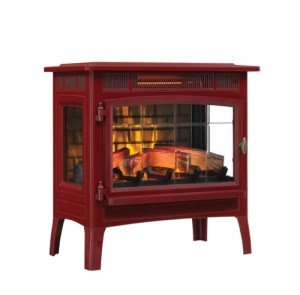Best Value Fireplaces: An In-Depth Guide
The fireplace has long been regarded as the heart of a home, providing heat, ambiance, and a focal point for celebrations. Nevertheless, navigating through numerous options can be overwhelming, particularly with spending plan constraints in mind. This short article presents an informative guide on the very best value fireplaces, detailing their types, features, and benefits to assist property owners make a wise choice.
Kinds of Fireplaces
Fireplaces can be found in a variety of designs and types, each with various characteristics, expenses, and advantages. Here's Small Fireplaces detailed appearance at the most typical types of fireplaces offered in the market today.
| Kind of Fireplace | Description | Average Cost | Pros | Cons |
|---|---|---|---|---|
| Wood-Burning | Burn logs to develop heat and atmosphere. | ₤ 1,500 - ₤ 5,000 | Authentic experience, natural heat | Requires regular maintenance, less efficient |
| Gas Fireplaces | Uses gas or lp to produce heat. | ₤ 2,000 - ₤ 5,000 | Easy to utilize, cleaner than wood | Limited to gas supply, setup costs |
| Electric Fireplaces | Replicates flames with LED innovation and produces heat by means of electrical energy. | ₤ 200 - ₤ 3,000 | Easy installation, setup flexibility | Less authentic feel, higher operating expenses |
| Pellet Stoves | Usage compressed wood or biomass pellets, offering an environmentally friendly alternative. | ₤ 3,000 - ₤ 4,500 | Efficient, low emissions | Requirements electricity to operate, needs storage for pellets |
| Ethanol Fireplaces | Burns ethanol fuel, producing flames that do not need a chimney. | ₤ 300 - ₤ 2,500 | No vents required, portable | Higher fuel expense, security concerns |
Factors to Consider When Choosing a Fireplace
Selecting the ideal fireplace is not practically looks; it also involves useful factors to consider. Here are important factors to bear in mind:
1. Spending plan
- Determine how much you are willing to invest. Bear in mind that installation and upkeep costs can include up.
2. Space and Size
- Guarantee the fireplace fits well within the room, thinking about both the space offered and the heating requirements.
3. Fuel Type
- Pick the fuel source based upon schedule, cost, and the type of ambiance you want to attain.
4. Efficiency
- Go with systems with high-efficiency ratings to ensure you are getting the most value for your money in terms of heat output.
5. Visual Appeal
- Select a style and style that matches existing decor and improves the total appeal of the area.
6. Laws
- Understand regional guidelines, allows, and building codes that might impact your fireplace setup.
Top Best Value Fireplaces
Based on consumer reviews, expert opinions, and general value for cash, here are some of the best value fireplaces presently offered in the market:
1. DuraVent Pellet Stove
- Type: Pellet
- Typical Cost: ₤ 2,000
- Emphasizes: Highly efficient with low emissions, making it an exceptional option for environmentally-conscious homeowners.
2. Napoleon B36NTR-1
- Type: Gas
- Typical Cost: ₤ 2,500
- Highlights: This fireplace is visually appealing and highly efficient, with a sleek design and adjustable flame.
3. Duraflame Electric Heater Stove
- Type: Electric
- Average Cost: ₤ 200
- Highlights: Affordable and portable, perfect for smaller sized spaces or adding ambiance to a space without long-term installation.
4. Genuine Flame Juliet Gel Fireplace
- Type: Ethanol
- Typical Cost: ₤ 300
- Highlights: A trendy alternative for modern areas that needs no venting, making it flexible and easy to install.
5. Vogelzang VG5790
- Type: Wood-Burning
- Average Cost: ₤ 800
- Emphasizes: Offers a traditional wood-burning experience with a sleek modern design, perfect for those who value the traditional ambiance.
Frequently Asked Questions (FAQs)
Q1: What is the most economical fireplace alternative?
A1: Electric fireplaces tend to be the most affordable in terms of initial purchase price and setup, however can have greater operating expense compared to gas or pellet units.
Q2: Are gas fireplaces more secure than wood-burning fireplaces?
A2: Yes, gas fireplaces normally produce fewer emissions and present a lower threat of chimney fires as they don't produce creosote like wood-burning systems.
Q3: Can I set up a fireplace myself?
A3: While some electric fireplaces permit simple self-installation, other types, specifically gas and wood-burning designs, normally need professional installation due to venting and safety issues.
Q4: How do I preserve my fireplace?
A4: Regular maintenance consists of cleaning the chimney (for wood-burning fireplaces), checking for gas leakages (in gas systems), and guaranteeing correct ventilation for electric models.
Q5: Is an ethanol fireplace an excellent choice?
A5: Ethanol fireplaces are appealing for their modern design and ease of installation. However, they can be less efficient and more costly to operate long-lasting compared to other fuel types.
Picking a value fireplace that meets your visual preferences and useful needs includes extensive research study and consideration. By understanding various types of fireplaces, their associated expenses, and benefits, property owners can make educated choices that will not only fit their budget however likewise improve the warm and welcoming atmosphere of their homes. Whether opting for an electric, gas, wood-burning, pellet, or ethanol model, the perfect fireplace waits for to change your home.

